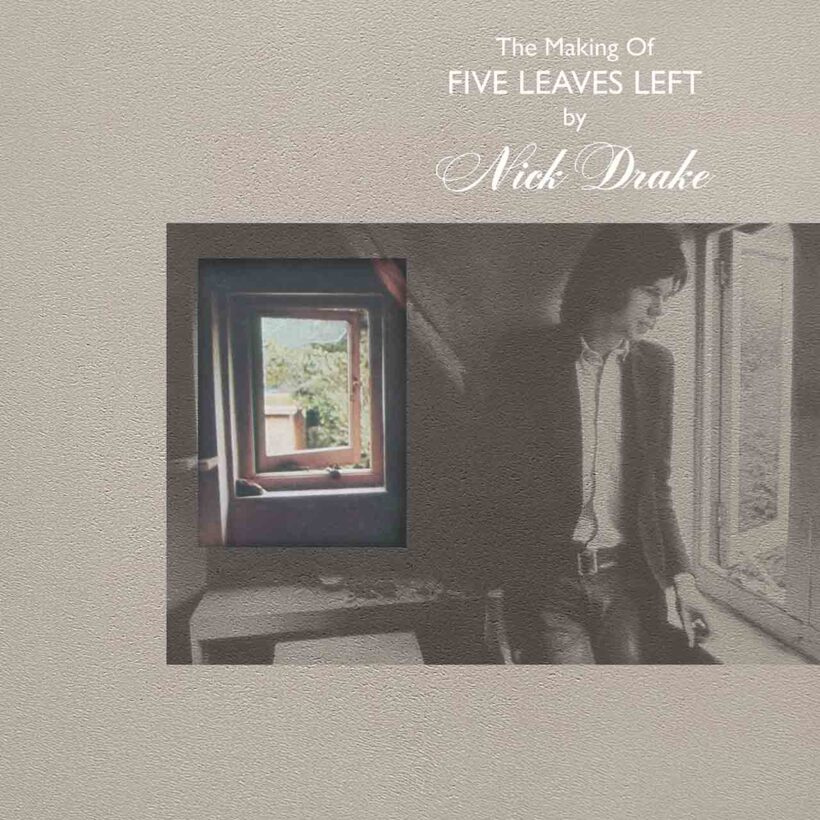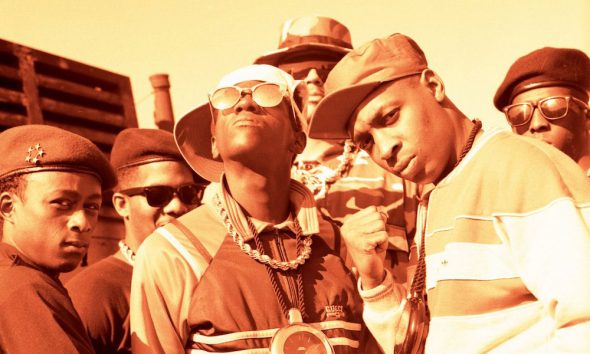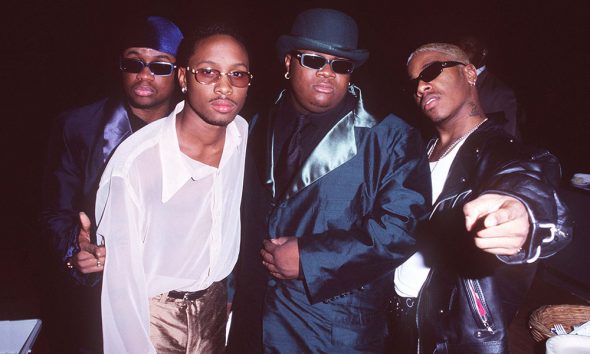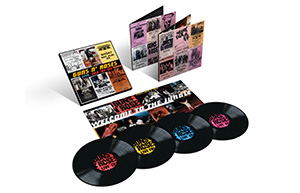Nick Drake’s Debut Gets Its Due On ‘The Making of Five Leaves Left’ Box Set
The box set illuminates how Drake’s haunting debut took shape, from lost demos and early sessions to the subtle brilliance that defined his sound.

Music archivist Neil Storey’s assignment to investigate the Nick Drake archives involved such intense secrecy that he drolly likens it to ‘70s cinematic thriller Day of the Jackal. “The policeman is told he has to investigate,” Storey explains, “but he cannot tell anybody what he’s investigating.”
It all began nearly a decade ago with a cautious call from Johnny Chandler, Universal’s A&R Director at the time. “He rang me and said, ‘I want you to do some sleuthing,’” Storey recounts. “‘I’ll give you all the permissions you need, but I need you to get into the Universal archives and find out exactly what is there with Nick’s name to it with regard to Five Leaves Left. You cannot breathe a word; nobody must know…this is the most secret thing ever.’”
Storey eventually uncovered a bounty of unheard tapes telling a tantalizing story of how Drake’s classic 1969 debut LP was born. The results of his quest can finally be heard in the lovingly assembled Grammy-nominated four-album box set The Making of Five Leaves Left.
Buy Nick Drake’s Grammy nominated The Making of Five Leaves Left now.
Up until now, Drake has been the quintessential cult figure. Between the British songsmith’s moody, mysterious music; his solitary poet image; and the inevitable “What if?” engendered by his tragically short life, Nick Drake fandom has always been a kind of secret handshake among the cognoscenti.
“When you would play your friends’ records that you liked, Nick was always on that list,” confirms Storey. “If you were getting serious with a girlfriend you would certainly play them Nick Drake… if they didn’t get that, then probably you were in fairly sticky water.”
But you can’t remain a shadowy figure once something like The Making of Five Leaves Left is out in the world. The release pulls Drake’s legend definitively out of the darkness and into its proper place for posterity.
The original album
Drake was a 19-year-old Cambridge University student when recording of his debut commenced, and he was 20 when it was completed. “The album is an extraordinary achievement for someone barely out of their teens,” observes Richard Morton Jack, author of Nick Drake: The Life and contributor to the box set’s voluminous liner notes.
Five Leaves Left introduced a wildly precocious young man who shared superficial commonalities with some other 1960s singer/songwriters but was ultimately a total one-off. His gently luminescent croon, dazzlingly complex guitar picking and strange tunings, and the elegantly eerie string arrangements all conspire for a deeply autumnal experience.
“I think his developing guitar style was inspired by Davy Graham, Bert Jansch and John Renbourn,” ventures Morton Jack. “Perhaps John Fahey too, as well as Spaniards such as Narcisco Yepes and Andrés Segovia, and probably some Brazilian players. By the time he came to make the album, though, I think he had forged his own guitar style.”
The elliptical poetry of “Three Hours,” “Cello Song,” and “River Man” sidesteps both the confessional and sociopolitical songwriting styles in vogue at the time, all the better to achieve timelessness. “It’s tempting to infer that Nick’s cryptic words were inspired as much by the likes of Cohen and Dylan as by the Romantic poets,” offers Morton Jack.
The album’s legacy
And yet, for all the album’s uncommon artistry, its initial commercial impact was nil. The same situation befell Drake’s other two albums. But producer Joe Boyd was so confident of their quality that he made a special arrangement with Island Records boss Chris Blackwell. Storey, who co-ran the label’s press office from the mid ‘70s to mid ‘80s, explains, “The agreement was – and this is written down – that Nick’s records were never ever to be deleted.”
Across the ensuing decades, through a combination of prominent TV and film placements and the cultural drift of history, Drake’s work has garnered more and more attention. But the legacy of the man who released his final album in 1972 and died in 1974 has remained frustratingly finite. With The Making of Five Leaves Left, though, the door is thrown wide open, and things that lay hidden for more than half a century are bursting into view.
The archival release
The tapes that track Drake’s Five Leaves Left journey come from multiple sources. A tape of Nick’s first session at London’s Sound Techniques studio in March 1968 was obtained from folk singer and Drake confidante Beverley Martyn. A 1968 recording of Nick alone was made at Cambridge by undergraduate friend Paul de Rivaz to aid Drake and Kirby in prepping for a local performance. The rest are later studio sessions found in the Universal UK vaults during Storey’s sleuthing.
What those recordings reveal is a young man who may have still been refining some of his material but was already completely in control of his artistic vision. The first studio session includes “Time Has Told Me” minus the album version’s tumbling Danny Thompson acoustic bass lines, pedal-steel-like Richard Thompson (no relation) guitar punctuation, and flowing Paul Harris piano. But even unaccompanied, Drake still sounds precociously sage and technically masterful.
It’s a bit like peeking into an alternate universe when you hear “River Man” stripped down to just Nick and Danny. Harry Robinson’s Delius-inspired orchestration for the tune is one of the most arresting, forward-looking string arrangements on any ‘60s “pop” record this side of “Eleanor Rigby.” But its absence allows us to focus on the rocket science of Drake’s next-level chord changes, and Thompson’s telepathic movements in the moment.
Drake never played guitar at all on “Way to Blue.” And as much as his schoolmate Robert Kirby’s string arrangement on the final version helps make it a melancholic masterpiece, a lo-fi Cambridge recording of Drake at a piano sketching out the song rings an exponentially more lonesome bell.
But the box is almost as much about what was left off of Five Leaves Left – the tunes that were hovering around Drake’s head during that period but never saw release in his lifetime. The set opens with Joe Boyd saying, “Okay, here we go, whatever it is, take one” before Drake drops into the pastoral, almost anachronistic “Mayfair,” previously heard only in a Cambridge recording on a posthumous rarities collection.
Some songs have never been available before in any form, like the Cambridge-captured “Mickey’s Tune” and “My Love Left with the Rain.” The former is a slinky, jazzy cut bobbing along on a syncopated 6/8 groove. On the latter, we hear Drake describing his arrangement ideas for the song before he stirs a splash of tears into some vivid nature imagery for a bucolic but bereft ballad.
For Storey, one of the most revelatory moments is what he calls the “mad mix” of “Strange Face,” which would become “Cello Song” in a much more sedate arrangement. “Just bonkers,” he says. “They’re overdubbing everything you can think of; it’s like they’re putting kitchen sinks in there. You just don’t expect it, and then suddenly there it is, with all this jangly piano, and I’m sure there’s a sitar in there. John [Wood, original engineer] doesn’t think there is but I’m sure there is. What would have happened if they’d continued down that path?”
He’s also partial to a later version with Danny, Nick, and cellist Clare Lowther as “Cello Song.” “That’s pretty extraordinary,” he marvels. “It’s like you’re eavesdropping. You can hear them kind of feeling each other out musically. Clearly, they’re watching each other. The playing is of a seriously high standard.”
Separating mystery from mystique
For the faithful, hearing how Five Leaves Left came together step by step may feel a little like watching footage of the great pyramids being assembled. “I hope it creates a better understanding of how this as an album came to be made,” says Storey, “the fact that it wasn’t just banged off in three sessions; It was really a long process.” Not only does observing the process answer loads of questions, it has a demythologizing effect. Ever since Drake’s death, increasing layers of tragic-troubadour mythos have been built up around him. But even something as simple as his between-take studio chatter here has a humanizing effect.
“I think there’s a bit too much myth attached,” agrees Storey. “I think people will be taken aback a bit by hearing him talk, because that’s never been heard.” But one of the most useful services The Making of Five Leaves Left provides is the crucial separation of mystery from mystique. Mystique comes from outside, existing in the perception of others. Mystery emanates from the inside, relying only upon itself, and it can be as unchanging as a blood type or a fingerprint.
Mystery has always been and will always be a part of the Five Leaves Left experience. “It has an enigmatic core that allows every listener to project their own response onto it,” Morton Jack confirms. Shining a light on it only makes that shadowy dance between unknowability and recognition feel more real.
The work that Storey; Nick’s sister, Gabrielle Drake; John Wood; Nick’s estate manager, Cally Callomon; and others have done towards that end is a boon to hardcore fans and newbies alike. “It’s been such a privilege to be a sleuth,” says Storey of his detective work, “to put my Sherlock Holmes hat and my Poirot mustache on together.”
Filling in the music’s back story makes it clearer that Drake’s work was not so much ahead of its time as it was outside of time. Nothing before or after has ever sounded remotely similar. It simultaneously occupies its own place in history and transcends the temporal. “We live in a world governed by bloody TikTok,” says Storey, “where everything has to be captioned, all that rubbish. A release like this… it’s beyond all that.”
Buy Nick Drake’s Grammy nominated The Making of Five Leaves Left now.














